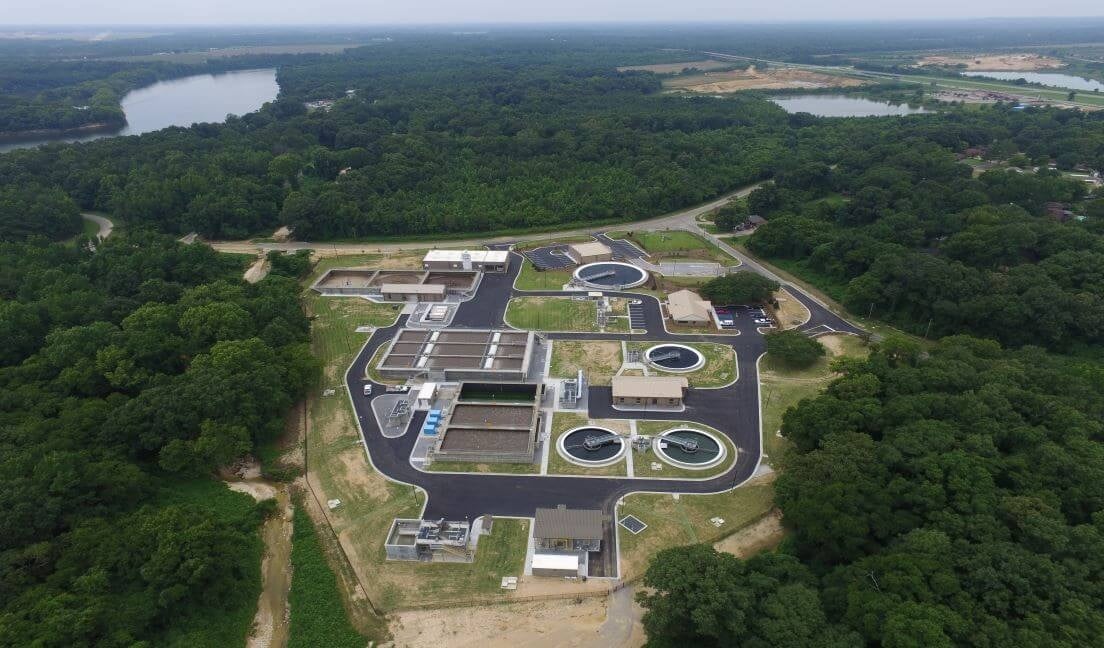Challenge
In 2008, the engineers at HDR, Inc. began planning a capacity increase for the City of St. Charles Missouri Wastewater Treatment Plant to handle additional flow. To comply with new U.S. EPA rules, the treatment plant needed to be expanded to 7.54 million gallons per day (MGD). The landlocked plant also had limited opportunities for physical expansion and required a solution to fit within the existing footprint which included three parallel-operated, oxidation ditches.
Solution
Upon inspection of the plant, HDR, Inc. recommended the replacement of the Vertical Loop Reactor (VLR®) oxygenation system which included brush aerators and internal “boat clarifiers." The brush aerators were experiencing problems with icing and shaft breakage, and many of the aeration “stars” were corroded and had broken off. The boat clarifiers—originally designed as a pre-clarification step to lower the Solids Loading Rate on the existing final clarifiers—were inefficient and interfered with channel velocity, causing mixed liquor suspended solids (MLSS) to settle in the basins. Upon evaluation by Evoqua product experts, it was discovered that the existing tank widths were ideal for disc aerators.
In 2010, the brush aerators and boat clarifiers were replaced with (12) VLR mounted disc aerators. The disc aerator design fulfilled the oxygen requirement needed for the 7.54 MGD design flow plant, which allowed for the treatment of higher organic loading within the existing footprint.
Results
After start-up, it was apparent that the new disc aeration design delivered additional benefits. Plant operators noted that noise was reduced since the disc aerators were able to move through the water easier and required a smaller gearbox vs. brush aerators. The disc aerators also provided better mixing, minimizing dead zones and fewer odors resulting from good oxygenation within the basins.
In addition, by placing the existing oxidation ditches in a series flow pattern to create independent environmental zones, the oxygen transfer capacity of each zone increased the nutrient removal capacity of the plant allowing for denitrification of recycled nitrates, as well as simultaneous nitrification/ denitrification. This process allows some of the influent ammonia to be converted from nitrite directly to nitrogen gas, reducing energy consumption and total nitrogen discharges. Controlling the oxidation-reduction potential of the first tank in the series also enhances the biological phosphorus removal capacity of the system.
The series flow pattern increases the efficiency of treatment without increasing tank volume. Denitrifying bacteria use the chemically combined oxygen to stabilize influent biological oxygen demand, rather than absorbing mechanically injected dissolved oxygen. Reducing mechanical oxygen injection reduces purchased power. The design model indicates the new treatment system is 20–25% more energy efficient than the parallel brush aerator installation.
Since the disc aerators have been installed, the focus of the plant’s maintenance personnel has shifted from emergency maintenance of the old system to lower-cost, preventative maintenance. The disc aerators provide access platforms to the drives and outboard bearings, making them easier to maintain. Because the discs have no deterioration or corrosion, the expected lifetime of the system is almost 20 years.

